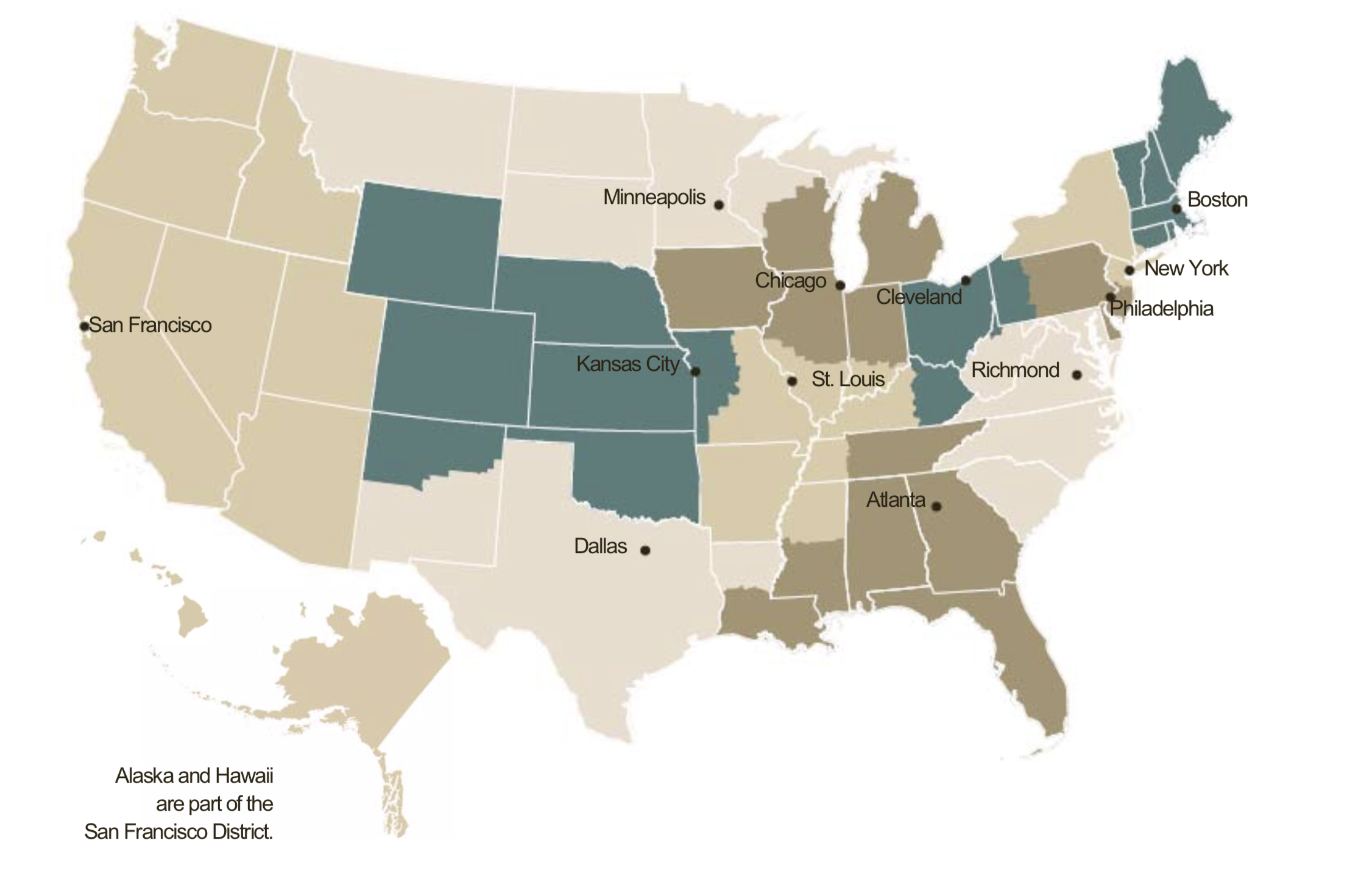The most recent Beige Book (July 2019) released by the Federal Reserve System included conditions impacting agriculture throughout the country. Overall, it found that agricultural conditions “continued to expand at a modest pace overall," with “little change from the prior reporting period.”
The Beige Book is a Federal Reserve System publication about current economic conditions across the 12 Federal Reserve Districts. It characterizes regional economic conditions and prospects based on a variety of mostly qualitative information, gathered directly from District sources.
The qualitative nature of the Beige Book creates an opportunity to characterize dynamics and identify emerging trends in the economy that may not be readily apparent in the available economic data. Because this information is collected from a wide range of business and community contacts through a variety of formal and informal methods, the Beige Book can complement other forms of regional information gathering.

Reports from the 12 districts included regional commentary on agriculture within their areas of responsibility. Following are their comments.
The Sixth District — Atlanta
Agricultural conditions across the District were mixed. Recent reports indicated much of the District was drought-free although parts of Alabama, southern Georgia, the Florida panhandle, and Tennessee experienced abnormally dry to moderate drought conditions. The District’s cotton, soybean, peanut, and rice crops were mostly on par with five-year planting averages. Florida orange forecast was down in June from the prior month's forecast, but was higher than the last two season's production levels. On a year-over-year basis, prices paid to farmers in May were up for cotton but down for corn, rice, soybeans, broilers, and eggs.
The Seventh District — Chicago
More wet weather in late May and June caused further delays in planting and even poorer growing conditions. One contact in Indiana said, “I have been farming for 48 years now and this is the worst spring/summer planting season we have experienced.” Because it is now too late to plant corn and soybeans, contacts said that many farmers would be forced to make insurance claims and plant less-profitable cover crops. Corn and soybean prices moved up as expected yields for the fall harvest declined. Egg and dairy prices increased, while hog and cattle prices decreased. Contacts noted that struggling dairy operations were slaughtering more cows, which contributed to the lower cattle prices.
The Eighth District — St. Louis
District agriculture conditions have declined modestly since the previous reporting period and have deteriorated moderately relative to a year ago. Compared with one month prior, the percentage of corn and cotton rated fair or better at the end of June declined modestly, the percentage of soybeans rated fair or better declined slightly, and the percentage of rice rated fair or better increased slightly. The percentages of all four crops rated fair or better were moderately below those from the same time last year. Contacts have frequently attributed the decline in crop quality to the historic flooding along the Mississippi River this spring.
The Ninth District — Minneapolis
District agricultural conditions worsened from an already weak position. Heavy rainfall and flooding substantially delayed crop planting in many areas of the District. In some areas farmers switched from corn to soybeans or other crops that could start growing later, while in other areas crops did not get planted at all. Contacts in affected areas expressed concerns that the impacts could be severe.
The Tenth District — Kansas City
The Tenth District farm economy remained weak, and delayed planting and harvesting could reduce crop production considerably in some states. Weather conditions led to unprecedented delays in corn and soybean planting in some areas of the region. Wheat harvest was also delayed considerably in Oklahoma, Missouri and Kansas. In late June, the percentage of wheat acres harvested in these three states was less than half of the previous year. While expectations of lower U.S. crop production led to sharp increases in prices over the period, uncertainty about the total number of planted crop acres remained. Weather conditions may also reduce the quality of planted crops, which could dampen revenues for some producers.
The Eleventh District — Dallas
Moisture levels remained adequate or surplus across most of the district, delaying some plantings but improving crop conditions overall. Pasture and range conditions were quite favorable. Grain prices rose over the reporting period which, coupled with favorable crop conditions, boosted optimism among producers. However, higher grain prices were a negative for livestock producers, driving up feed costs and damping cattle prices. Many agricultural producers were concerned about imposed tariffs and uncertainty surrounding future trade policy. Cotton demand has been adversely impacted by tariffs and slowing global economic growth.



![[Technology Corner] Quantifying the Impact of a Precision Ag Pioneer](https://www.agequipmentintelligence.com/ext/resources/2024/08/23/Quantifying-the-Impact-of-a-Precision-Ag-Pioneer.png?height=290&t=1724422794&width=400)
Post a comment
Report Abusive Comment